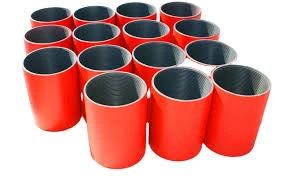- Afrikaans
- Albanian
- Amharic
- Arabic
- Armenian
- Azerbaijani
- Basque
- Belarusian
- Bengali
- Bosnian
- Bulgarian
- Catalan
- Cebuano
- Corsican
- Croatian
- Czech
- Danish
- Dutch
- English
- Esperanto
- Estonian
- Finnish
- French
- Frisian
- Galician
- Georgian
- German
- Greek
- Gujarati
- Haitian Creole
- hausa
- hawaiian
- Hebrew
- Hindi
- Miao
- Hungarian
- Icelandic
- igbo
- Indonesian
- irish
- Italian
- Japanese
- Javanese
- Kannada
- kazakh
- Khmer
- Rwandese
- Korean
- Kurdish
- Kyrgyz
- Lao
- Latin
- Latvian
- Lithuanian
- Luxembourgish
- Macedonian
- Malgashi
- Malay
- Malayalam
- Maltese
- Maori
- Marathi
- Mongolian
- Myanmar
- Nepali
- Norwegian
- Norwegian
- Occitan
- Pashto
- Persian
- Polish
- Portuguese
- Punjabi
- Romanian
- Russian
- Samoan
- Scottish Gaelic
- Serbian
- Sesotho
- Shona
- Sindhi
- Sinhala
- Slovak
- Slovenian
- Somali
- Spanish
- Sundanese
- Swahili
- Swedish
- Tagalog
- Tajik
- Tamil
- Tatar
- Telugu
- Thai
- Turkish
- Turkmen
- Ukrainian
- Urdu
- Uighur
- Uzbek
- Vietnamese
- Welsh
- Bantu
- Yiddish
- Yoruba
- Zulu
Exploring Innovations in Steel Coupling Technologies for Enhanced Structural Integrity and Performance
Steel Coupling A Critical Component in Modern Engineering
In the contemporary engineering landscape, steel coupling has emerged as an indispensable element in various applications ranging from construction to machinery. This versatile and robust component plays a crucial role in ensuring the efficient transfer of torque and the reliable connection between two shafts, thereby facilitating the proper functioning of numerous systems.
Understanding Steel Coupling
Steel couplings are mechanical devices designed to connect two rotating shafts, allowing them to transmit power and motion without significant loss of energy. Unlike other materials, steel is favored for its strength, durability, and ability to withstand harsh conditions. These characteristics make steel couplings particularly suitable for industrial applications, where high levels of stress and strain are the norms.
Couplings can be categorized into various types, including rigid, flexible, and universal. Rigid couplings are used when precise alignment between shafts is critical. They offer high torque transmission and minimal backlash. Flexible couplings, on the other hand, can accommodate misalignment and provide some level of vibration dampening, making them ideal for applications where rotational movement is not perfectly aligned. Universal couplings, often referred to as universal joints, are capable of connecting non-parallel shafts and allowing for angular misalignments.
Applications of Steel Couplings
Steel couplings find extensive use across multiple industries. In the automotive sector, they are integral components of driveshafts, where they connect the engine to the wheel assemblies, enabling efficient power transfer. In manufacturing, steel couplings are crucial for connecting motors to gearboxes, pumps, and other driven equipment, ensuring that energy is transmitted efficiently and reliably.
Moreover, in the construction industry, steel couplings are used in various structural applications. They can connect steel beams or pipes, providing stability and strength to structures such as bridges, buildings, and towers. The ability to withstand heavy loads and resist deformation makes steel coupling a preferred choice for ensuring the integrity and longevity of engineering projects.
steel coupling

Advantages of Steel Couplings
One of the principal advantages of steel couplings is their robustness. Steel, being a material with high tensile strength, provides excellent resistance to wear and deformation. This durability translates into a longer lifespan for the coupled system, reducing the frequency of maintenance and replacement. Furthermore, steel couplings can operate effectively in extreme temperatures and challenging environments, such as those found in mining or oil drilling operations.
Another advantage is the versatility of steel couplings. They can be manufactured in various sizes and designs to suit specific application requirements, making them adaptable to a wide range of industrial needs. This customizability is essential for engineers who must design systems that meet exact specifications while ensuring optimal performance.
Challenges and Considerations
Despite their many benefits, steel couplings are not without challenges. One of the primary concerns is the potential for corrosion, particularly in environments where they are exposed to moisture and chemicals. To mitigate this risk, many manufacturers apply protective coatings or use stainless steel, which offers superior corrosion resistance.
Another consideration is the proper alignment of coupled shafts. Misalignment can lead to excessive wear and eventual failure of the coupling. Engineers must ensure precise alignment during installation and maintenance to achieve optimal performance and longevity.
Conclusion
In conclusion, steel coupling is a vital component in the realm of engineering and manufacturing. Its ability to connect rotating shafts efficiently while providing durability and versatility is unparalleled. As industries continue to evolve and demand higher performance from their mechanical systems, steel couplings will play a key role in driving innovation and enabling advancements across various sectors. Understanding the applications, benefits, and considerations surrounding steel couplings is essential for engineers and practitioners looking to harness the full potential of this critical mechanical element.
-
Tubing Pup Joints: Essential Components for Oil and Gas OperationsNewsJul.10,2025
-
Pup Joints: Essential Components for Reliable Drilling OperationsNewsJul.10,2025
-
Pipe Couplings: Connecting Your World EfficientlyNewsJul.10,2025
-
Mastering Oilfield Operations with Quality Tubing and CasingNewsJul.10,2025
-
High-Quality Casing Couplings for Every NeedNewsJul.10,2025
-
Boost Your Drilling Efficiency with Premium Crossover Tools & Seating NipplesNewsJul.10,2025







